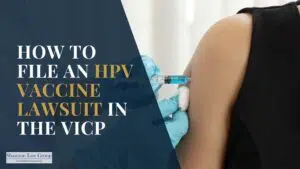
When an insurance company fails to settle a claim within its insured’s policy limits (despite a reasonable likelihood that a verdict will exceed those policy limits), the insurance company may be exposed to a claim for bad faith.
Under the law, an insurance company has a duty to give fair consideration to the rights of its insured when considering a settlement offer.
Let’s say an insurance company fails to consider its policyholder’s rights in deciding whether to accept a reasonable settlement offer. As a result, the policyholder’s assets are exposed to a judgment in excess of their insurance protection. In this situation, the policyholder may have a bad faith claim against the insurance company.
For example, a driver of a vehicle who is insured with a policy limit of $100,000 causes an accident that results in over $300,000 in damages to the other driver. The injured driver wants to settle the case for the $100,000 limit, but the at-fault driver’s insurance company refuses to accept the offer without a reasonable basis for doing so.
The case then proceeds to trial and results in a verdict far exceeding the amount of the coverage available, jeopardizing the policyholder’s personal assets. In that situation, the policyholder is personally on the hook for $200,000 when their insurance company should have ensured they paid nothing out of pocket.
If there is a reasonable likelihood of an excess verdict, like when the injured claimant’s medical bills exceed the policy limit, and the insurer still fails to settle the claim, the insurance company has breached its duty of good faith to its policyholder.
In this situation, the policyholder has the right to bring a cause of action against the insurer, not the injured driver, for the amount of the excess verdict. The policyholder had a contractual relationship with the insurer, and the policyholder is obligated to compensate the injured victim. Technically, it is the insured who was wronged through their relationship with the insurer. Thus, the bad faith claim belongs to the insured.
How does the injured victim get compensated?
Only a small minority of states allow the injured third-party to bring a bad faith action directly against the insurance company. However, in many jurisdictions, including Illinois, the policyholder can transfer, or “assign,” their right to pursue the bad faith claim against the insurer to the injured victim.
Often, the policyholder will trade their rights to prosecute the bad faith claim, in exchange for an agreement not to execute the judgment against the policyholder’s assets. Essentially, they trade their case against the insurance company for relief from the judgment. The assignment of a bad faith claim can be accomplished by a voluntary agreement or may be compelled by an order of the court.
What happens when an insurance company refuses to defend its policyholder?
Sometimes, an insurance company may refuse to defend its insured in a third-party claim by an injured party. Insurers may claim that there is no coverage for an occurrence for whatever reason, and because there is no covered event, there is no duty to defend the insured.
Some courts find that, where an insurer improperly refuses to represent its insured, the insured may settle the claim on their own, directly with the injured claimant, and then seek reimbursement from the insurance company. [i]
This is often true, even if the policy precludes settlements made without the insurance company’s consent.[ii] Often where this is the rule, an insured can agree to have a judgment entered against them for a certain amount, and then assign the bad faith claim connected to that judgment to the injured victim.
In summary, even though a third-party claimant will most likely be unable to pursue a claim for bad faith directly against the offending insurance company, compensation for the injured victim can often be awarded via assignment of the insured’s bad faith claim.
[i] See, e.g. Ansonia Assoc. Ltd. P’ship v. Pub. Serv. Mut. Ins. Co., 693 N.Y.S.2d 386, 389 (1998)
[ii] See Id.
Schedule Your Free Consultation Today



